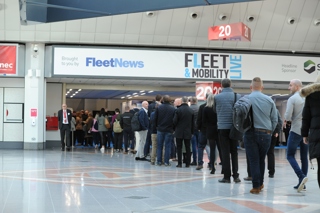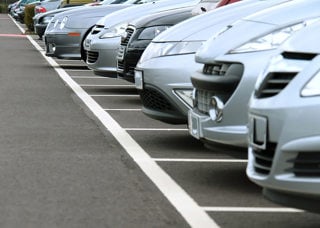Back in the early 2000s, cash allowance schemes were on the rise.
The company car fell out of favour as the Government changed benefit-in-kind taxation from a mileage-based system to a CO2 emissions one.
“A tremendous amount of companies and drivers believed the end of the company car was just around the corner,” says David Rawlings, director of fleet consultancy firm Business Car Finance Wessex.
Jason Francis, Jaama managing director, adds:“In 2001, when the tax rules changed, there were 150,000 company cars wiped off within 18-24 months .”
The rise of cash allowance takers, many of whom qualified for a company car, put fleets in a dilemma: it increased the size of their grey fleet – drivers using their own cars for business purposes.
The company had no control over the age or quality of the car the employee bought, raising concerns over safety and CO2 emissions when used at work.
In addition, reimbursing drivers for fuel at the 40p per mile AMAP rate (now 45ppm) was far more costly than the typical 12-14ppm AFR for company car drivers.
It’s no surprise, therefore, that companies have started to reassess their cash allowance schemes.
But they aren’t the only ones: cash takers are voluntarily opting back into company cars.
More than two-thirds (69%) of fleet respondents to a Fleet News poll in June were seeing a move from cash allowance schemes back into company cars. Major leasing companies, including Lex Autolease, LeasePlan, Arval, ALD Automotive, Alphabet and GE Capital Fleet Services, are also noticing the trend.
“In general there is a shift away from cash allowances,” says Jon Mackney, head of consultancy at Arval.
Paul Hollick, sales and marketing director at Alphabet, adds: “There’s definitely been a trend with some large cash players.”
LeasePlan suggests that cash schemes peaked about five years ago and have been in decline ever since. Others say the trend is more recent.
At Xerox, cash takers have been opting back into the company car scheme since the beginning of last year (see panel, left) while Phil Redman, fleet manager at IBM, noticed the trend mid-2010.
Why the switch?
Opinion is divided on whether companies or employees are driving the trend. However, from the drivers’ point of view there are clear financial reasons for re-considering company cars.
“Times are hard and budgets are under pressure,” says Tristan Campbell, fleet adviser at Chivas, which has 320 vehicles and 100 cash takers.
Over the past 18 months Campbell has seen drivers who work outside London switching back into the company car scheme.
“People who opted out previously have found that they don’t like replacing tyres, or when their car goes in for a service and there is additional work, or they have an accident and their insurance goes up,” he says.
“They want the company car so that everything is covered and there are no big surprises.”
Although Campbell welcomes the change from a duty of care point of view as he knows drivers will now be in well-maintained cars that are no older than four years, his view is at odds with the company’s.
“The company would prefer everyone to take cash,” he says. “It’s seen as less hassle and we offer a generous cash allowance as an incentive.”
Mackney agrees that drivers are “recognising the difficulties of running their own car” and are put off cash allowance schemes when they struggle to sell their car or end up getting less than they expected for it.
Then there is the issue of financing a new car.
“In the current economic climate, many individuals do not want to take out loans and finance for a private car,” says Claudia Rose, corporate sales director at Lex Autolease.
There are also now plenty of low CO2/high mpg vehicles with attractive benefit-in-kind tax rates available.
“Employees are realising that if they choose a low CO2 company car they can get more for their money than if they were to finance a new car themselves,” explains Rose.
Rawlings agrees that circumstances have changed since 2002 with all manufacturers bringing out low emission vehicles.




















Login to comment
Comments
No comments have been made yet.